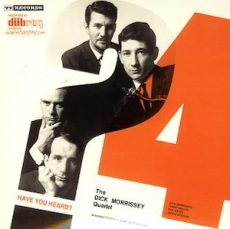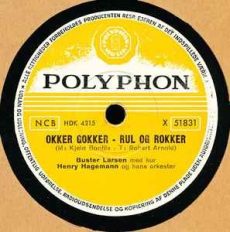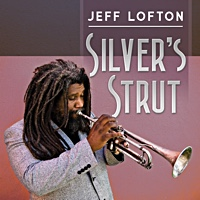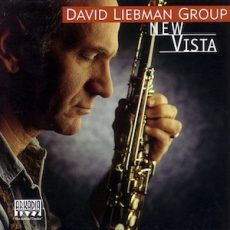
Daily Dose Of Jazz…
Harry Percy South was born on September 7, 1929 in Fulham, London, England. He came to prominence in the 1950s, playing with Joe Harriott, Dizzy Reece, Tony Crombie, and Tubby Hayes. In 1954, he was in the Tony Crombie Orchestra with Dizzy Reece, Les Condon, Joe Temperley, Sammy Walker, Lennie Dawes, and Ashley Kozak.
Returning from a Calcutta, India tour with the Ashley Kozak Quartet, he spent four years with the Dick Morrissey Quartet, where he both wrote and arranged material for their subsequent four albums. He formed the Harry South Big Band in 1966 with Latin, ballads and straight-forward swingers.
By the mid-1960s, he began working with British rhythm & blues singer and organist Georgie Fame, recording the album Sound Venture. He composed and arranged for Humphrey Lyttelton, Buddy Rich, Sarah Vaughan, and Jimmy Witherspoon and was musical director and arranger for Annie Ross.
He branched out into session work, writing themes for television and music libraries. He is credited with the arrangements used for Emerson, Lake & Palmer’s Works Vol. 1 (1977). In 1981, he again arranged for Annie Ross and Georgie Fame in a collaboration on what was to be Hoagy Carmichael’s last recording, In Hoagland.
Pianist, composer and arranger Harry South, who was honored with an album released by the National Youth Jazz Orchestra, died on March 12, 1990 in Lambeth, London at the age of 60.
More Posts: arranger,composer,history,instrumental,jazz,music,piano

Daily Dose Of Jazz…
Henry Hagemann was born on September 6, 1910 in Copenhagen, Denmark He became a professional musician in 1931 and played primarily saxophone and clarinet. Throughout his career, he played with Kai Ewans, Winstrup Olesen and Leo Mathisen, among others.
From 1944 to 1949 he led his own ensemble. Afterward he performed as a theater musician, first with Hans Schreiber in the Fiffer revues and later in the Circus revue . He has also been engaged at the New Scala, where he regularly served as bandmaster.
Saxophonist and clarinetist Henry Hagemann died April 5, 1964.
More Posts: bandleader,clarinet,history,instrumental,jazz,music,saxophone

Daily Dose Of Jazz…
Jeff Lofton was born on September 5, 1966 in Badhershfiele, Germany while his father was in the military. Returning to the States briefly in Virginia before moving back to their hometown of Columbia, South Carolina. Getting his first trumpet at eleven he began playing in the middle school band. In high school he was in the concert and jazz bands.
Graduating from the University of South Carolina his interest led to the avant-grade prior to moving to Dallas, Texas and then going on to performing in Austin, Texas. He has performed theater shows, released several recordings and formed an electric fusion group.
Trumpeter Jeff Lofton has been honored with a day in Austin and continues to perform and record.
More Posts: bandleader,history,instrumental,jazz,music,trumpet
Daily Dose Of Jazz…
Mark Jay Levine was born on October 4, 1938 in Concord, New Hampshire and began playing the piano at the age of five, trombone in his early teens. Attending Boston University, graduating with a degree in music in 1960, he also studied privately with Jaki Byard, Hall Overton and Herb Pomeroy.
Moving to New York City in the Sixties he freelanced and then played with musicians Houston Person, Mongo Santamaría, and Willie Bobo from 1971 to 1974. Levine then moved to San Francisco, California and played with Woody Shaw for two years. His debut album was made as a leader for Catalyst Records in 1976.
He went on to play with the Blue Mitchell/Harold Land Quintet, Joe Henderson, Stan Getz, Bobby Hutcherson, Luis Gasca, and Cal Tjader. From 1980 to 1983, he concentrated on valve trombone, but then returned to playing mainly the piano. He then led his own bands, and recorded for Concord as a leader in 1983 and 1985. From 1992 Mark was part of Henderson’s big band. He created a new trio in 1996 and recorded it for his own, eponymous label. His Latin jazz group, Que Calor, was formed in 1997.
He put on his educator hat in 1970, teaching in addition to private lessons at Diablo Valley College, Mills College, Antioch University in San Francisco, San Francisco Conservatory of Music, Sonoma State University, and the JazzSchool in Berkeley. Levine wrote two method books: The Jazz Piano Book, and The Jazz Theory Book.
Pianist, trombonist, composer, author and educator Mark Levine, whose album Isla was nominated for a Grammy Award for Best Latin Jazz Album, died of pneumonia on January 27, 2022 at the age of 83.
Get a dose of the musicians and vocalists who were members of a global society integral in the making and preservation of jazz for over a hundred and twenty-five years…
Mark Levine: 1938~2022 | Clarinet, Composer, Educator, Director, Producer
More Posts: author,bandleader,composer,educator,history,instrumental,jazz,music,piano,trombone

Daily Dose Of Jazz…
David Liebman was born September 4, 1946 into a Jewish family in Brooklyn, New York. As a child he contracted polio and began classical piano lessons at the age of nine and saxophone by twelve. His interest in jazz came when he saw John Coltrane perform live in New York City clubs aand throughout high school and college, Liebman pursued his jazz interest by studying with Joe Allard, Lennie Tristano, and Charles Lloyd. Upon graduation from New York University he began to seriously devote himself to the full-time pursuit of being a jazz artist.
In the early 1970s, he organized the cooperative, Free Life Communication, which became an integral part of the New York loft jazz scene. He landed a place with Elvin Jones’ band then an apprenticeship with Miles Davis from 1970 to 1974. Liebman explored his own music with the groups Open Sky Trio and Lookout Farm.In 1977 he toured the world with pianist Chick Corea, followed by his own quintet over three years.
David has worked with George Mraz, Al Foster, Ron McClure and Billy Hart, Vic Juris, Tony Marino, Bobby Avey, Matt Vashlishan and Alex Ritz, Joachim Kühn, Daniel Humair, Paolo Fresu, Jon Christensen, Bobo Stenson among others. He played with several European orchestras, and his artistic output is straight-ahead classic jazz, chamber music, fusion and avant garde.
As an educator he has published instructional DVDs, has taught at universities and clinics, and has regularly received grantees to study with him funded by the NEA, the Canadian Arts Council, as well as Arts Councils of numerous European countries. In 1989, he was the artistic director of the International Association of Schools of Jazz.
Saxophonist, flautist and jazz educator David Liebman, who received a NEA Jazz Masters lifetime achievement award, continues to perform and record.
More Posts: bandleader,educator,flute,history,instrumental,jazz,music,saxophone


